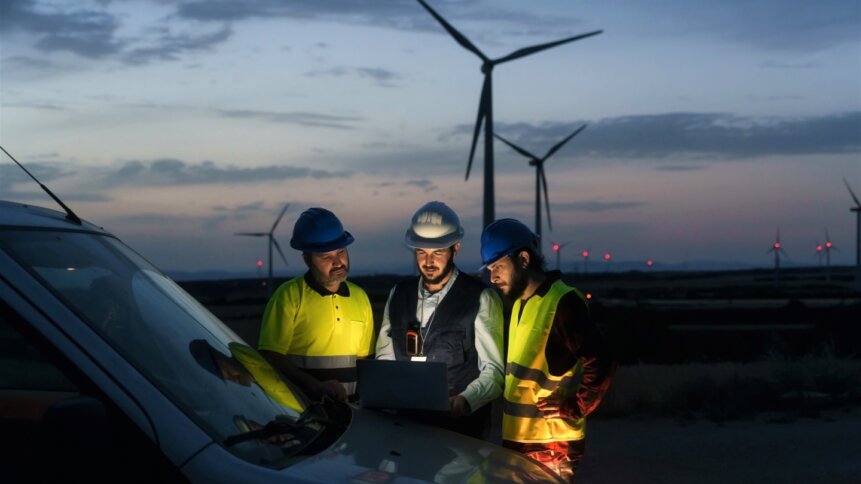VC engines rev up climate change solutions

If you scroll through the portfolio of companies on a venture capital (VC) firm’s website, there’s a good chance that you’ll find start-ups focused on tackling global warming. Today, VC engines – the investment smarts and mentoring skills capable of delivering 3x returns (or more) in a decade or less – have climate change solutions firmly in their sights. And this trend is hopeful news for the planet.
“We’re good at scale and speed,” Boaz Kantor – Technology Advisor at Future Energy Ventures – told TechHQ. “This is what we do best.” Kantor, an experienced technologist, has mentored a wide range of start-ups in energy, telecommunications, IoT, and related fields. And today he focuses on solving climate issues with deep tech and innovation.
Market forces
The economics of the VC scene necessitates bringing ideas quickly to the market and backing technology that can be deployed fast. Hungry for growth, start-ups and early-stage tech firms easily outpace governments in taking action. It may be too late to reverse global warming, but if you are looking for a ray of sunshine then you’ll likely find it in the portfolio of a VC firm.
Kantor has faith in the DNA of VC funds to deliver climate change solutions, but that doesn’t stop him from worrying about the planet. He spoke to TechHQ having returned recently from the COP27 conference, which took place in Sharm El Sheikh, Egypt. “You can’t leave the conference without a sense of urgency,” he said.
And while progress is being made, those gains need to be accelerated. He points to the growth in renewables as one of the highlights, but notes that systems need to be rolled out up to 10x faster than is happening today. Complicating the transition from fossil fuels to green energy is the fact that you can’t simply swap out a power station and replace it with a solar array or wind farm.
The energy grid needs to evolve. Renewables offer decentralized distribution and allow industrial and domestic users to provide their own power. Power stations on the other hand operate according to a centralized model. The question is how to affect that change and quickly?
Climate tech stack
“We’re developing a climate tech stack,” said Kantor, making an analogy to the famous OSI networking model. At the base, is all of the energy, water, and other key infrastructure, which includes the legacy systems that need to be updated. This slice can be thought of as the physical layer and emphasizes the role of hardware in realizing climate change solutions. But it’s not all about hardware.
Above the physical layer, in the climate tech stack, comes what Kantor describes as the ‘digitalization layer’. This includes IoT solutions and larger hardware communications. And further up the stack are the software layers. “If you can digitize the entire power grid then you have a huge amount of useful data,” Kantor points out.
Cloud hosting providers are already leveraging energy data to offer customers greener computing services. And a fully digitized power grid would provide even more opportunities to maximize the use of renewable energy. Automation would be much easier to enable, moving from human-managed systems to machine-managed, and using AI to optimize performance. “Quantum computers could provide near real-time decisions,” adds Kantor.
Software has already proven itself to be capable of understanding the environment, crunching data, and making decisions on behalf of operators. And there are many solutions being deployed that exemplify this, such as the analytics gathered from industrial drones. Today, airborne robots are capable of providing unmanned, automated performance monitoring of wind farms.

VC know-how: Boaz Kantor, Technology Advisor at Future Energy Ventures.
Services include assessment of blade pitch misalignment, high-resolution visual inspection of all blade surfaces, as well as identifying any anomalies on platforms, foundations, roads, and substations. Elsewhere, robots are being used to automate the cleaning of solar panels and perform module inspection. These are just a couple of examples of what the future may look like as cleantech start-ups find traction for their services and clear a path for greater digitization and automation.
However, despite the success stories there remains cause for concern. Overwhelmingly, deep tech and innovation-enabled climate change solutions tend to be applied in the Global North – in other words, across a belt of developed countries. Under the influence of market forces alone, cleantech will seek out areas of maximum profit, which may not coincide with regions of maximum impact – a puzzle that the VC world has yet to solve.
Developing countries, who are paying the environmental price for industrialization in the Global North, have long called for financial help in dealing with major issues such as rising sea levels. Droughts and floods are displacing populations and can prove deadly for those that are unable cope. And the decision to establish a ‘loss and damage’ fund taken at COP27 is seen as ‘an important step towards justice’.
Developed countries have made these pledges before, but the hope is that this time nations will rise to meet expectations. And if markets could be built more widely, then technology may come sooner to regions that are currently underserved by climate change solutions.










